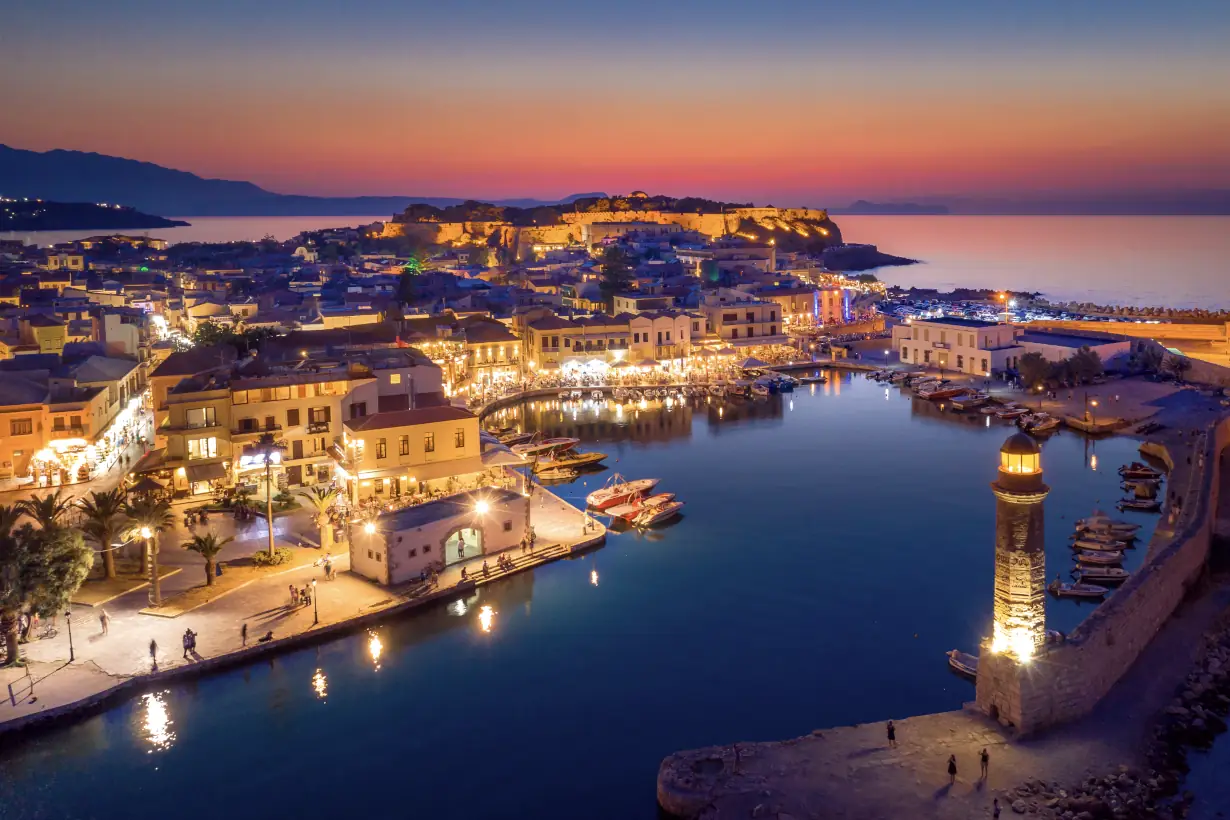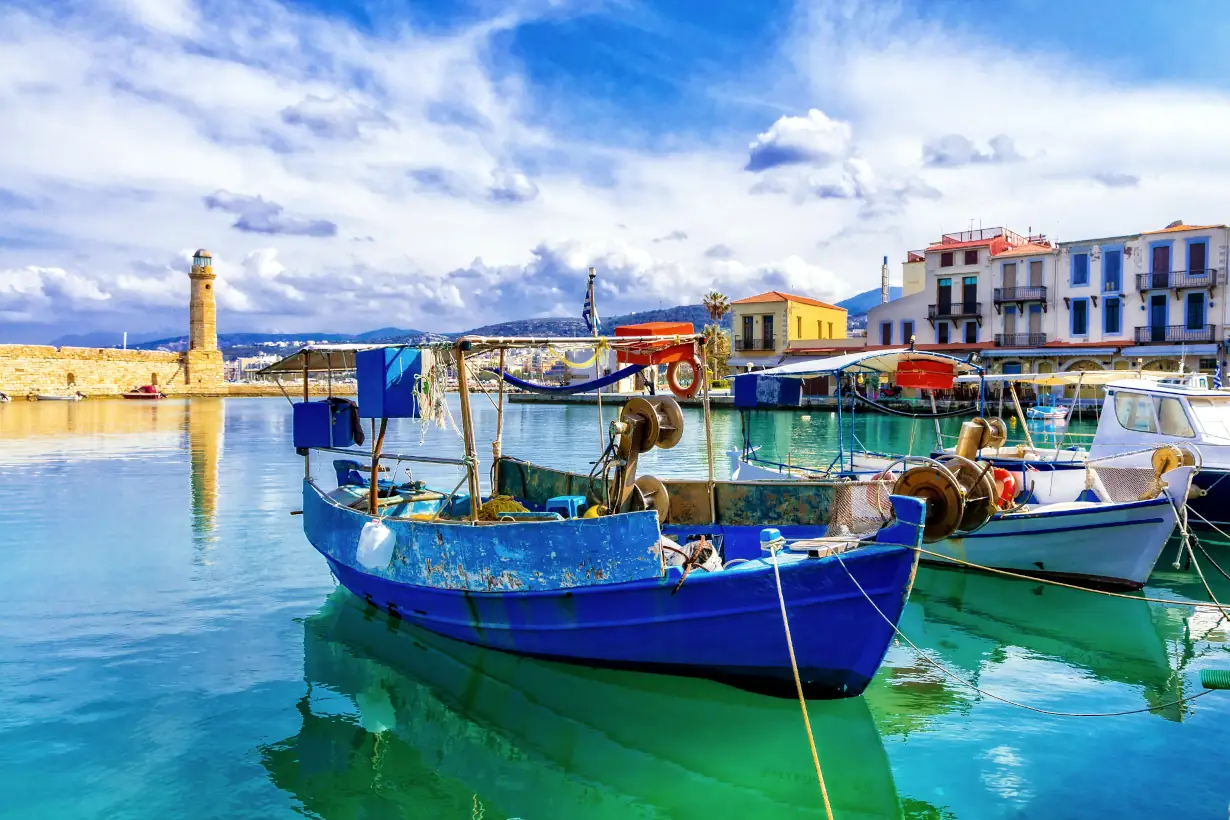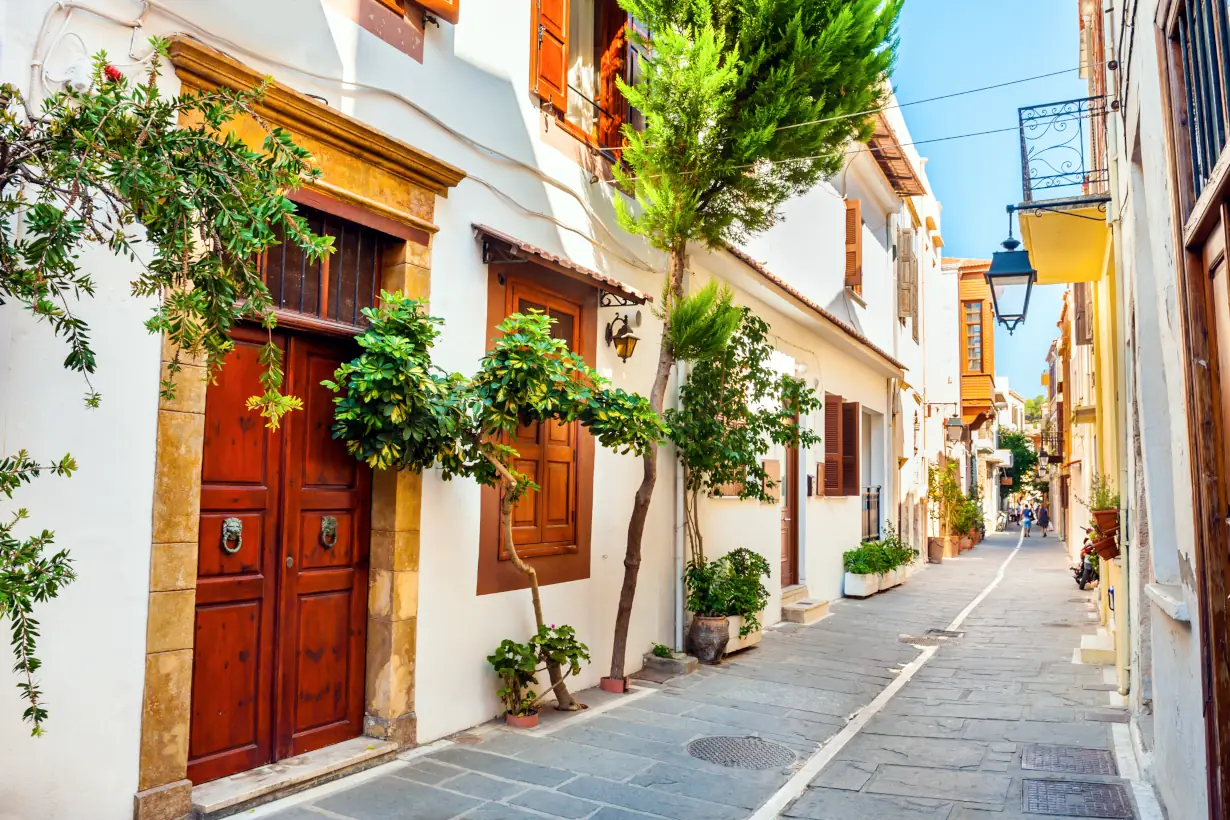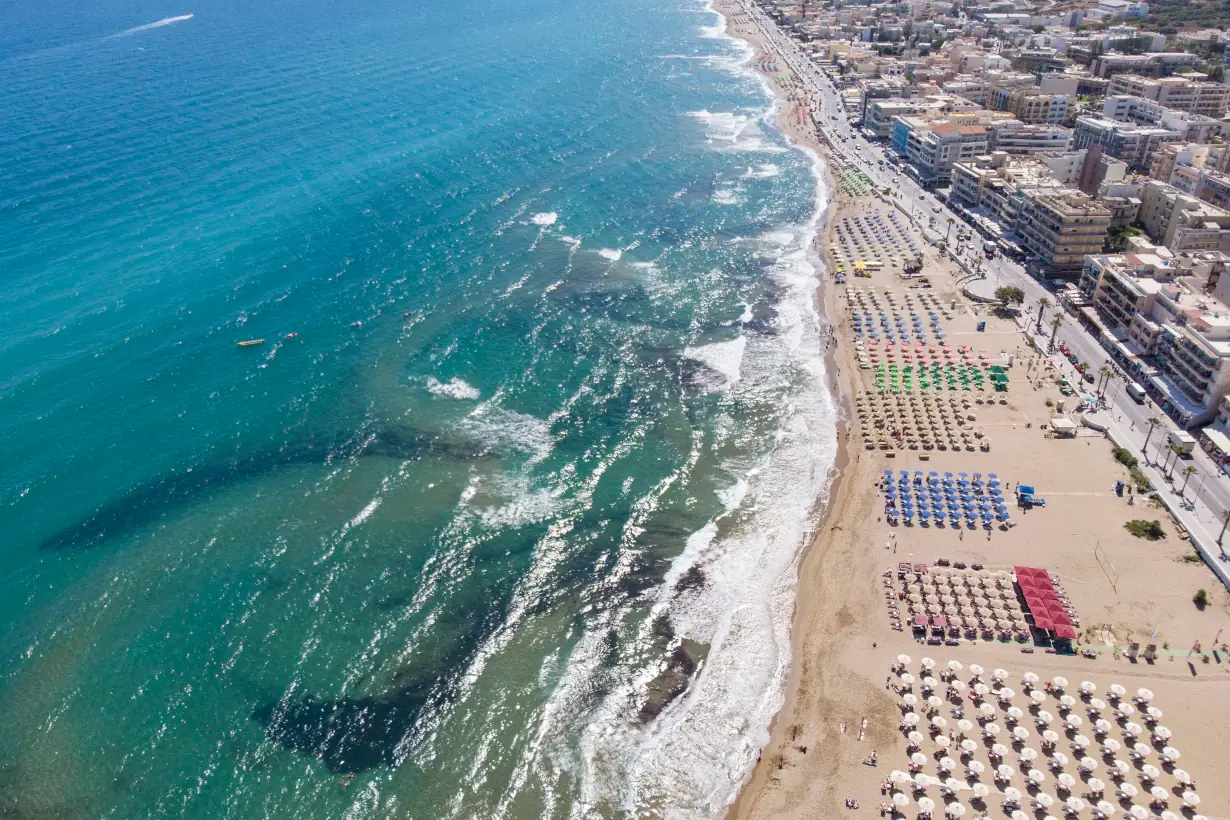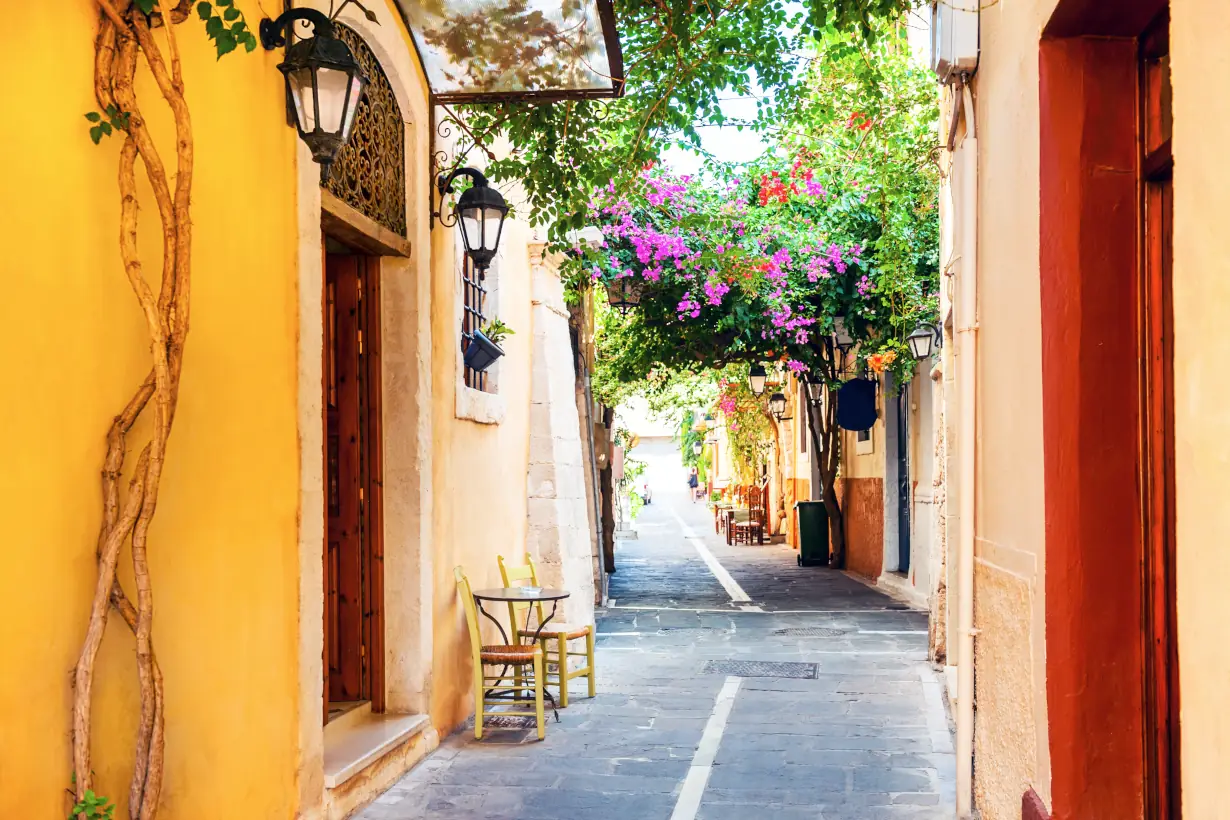A hidden treasure in Crete: the old town of Rethymno
Unforgettable sunsets can be experienced in tranquil Rethymno, where the old town nestles on the coast of a small peninsula. Above it towers the sprawling Fortezza Castle, built in the 16th century. On the café terraces along the sandy beach and harbour, you can get delicious coffee and local specialities, before the alleys of the old town entice you with their small houses decorated with flowers. The minarets of the former mosques and the wooden bay windows give Rethymno a touch of oriental flair. In combination with the Venetian mansions of the 16th and 17th centuries, an almost fairytale atmosphere is created.
Even as you approach, you recognise the special feature of Crete's third largest city: its old town spreads out entirely on a peninsula washed by the sea, on which a sprawling fortress rises in the northernmost part on a low hill plateau.
Right on the south-eastern edge of the old town begins a sandy beach many kilometres long, where you could also take a dip on hot days in the immediate city area. But you can do that much more comfortably here; it is better to devote the hours here entirely to strolling through the old town.
You will notice that Rethymno is contemplatively provincial. The slight hustle and bustle of Heraklion is missing, the old houses here are much smaller than in Chania. Some of the alleys look almost lovably village-like with all their flower decorations. You will also notice the multitude of minarets belonging to former mosques in the soft area of the city, which, together with the wooden oriels on a number of residential houses, exude a little oriental charm.
Unlike Chania and Heraklion, Rethymno was never the capital of Crete, but only a sub-centre in both Venetian and Ottoman times. However, culture was always strongly cultivated in this sub-centre.
A son of the town, Athanasios Patelaros (1597-1654) rose to the position of Patriarch of Constantinople, and with Pantelis Prevelakis (1909-1986), the most important Cretan writer after Nikos Kazantzakis was born in Rethymno.
Since 1987, an annual Renaissance festival has been celebrated at the castle - and the carnival parade on Carnival Sunday is the largest and most joyous on the whole island. In addition, Rethymno is a site of the University of Crete, whose Faculty of Philosophy is located here.
You are in category:
You might also be interested in:
Experience Crete Your itinerary contains 1 experience
gorgeous
beaches romantic
old towns fascinating
ancient sites imposing
gorges delightful
boat trips extraordinary
stalactite caves adventure
& thrills secluded
monasteries gourmet
restaurants culinary
products

